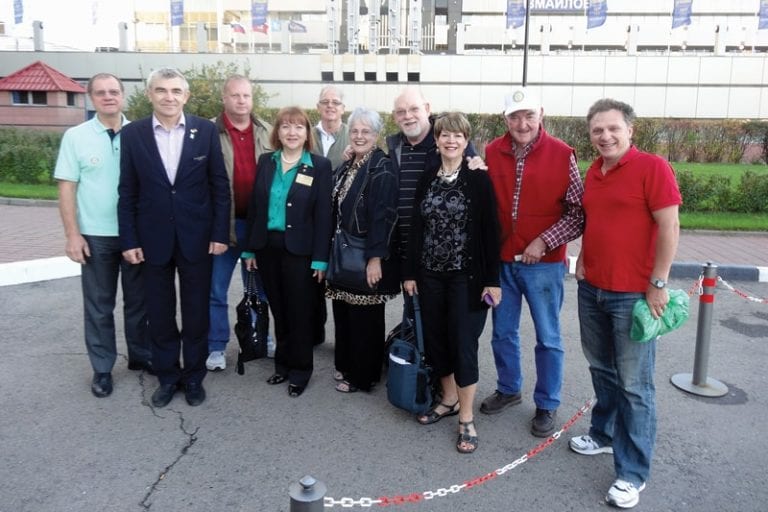

By Amber Jurgensen | Associate Editor
As a U.S. Air Force airman during the Cold War, Rotarian George Banning was expecting a stereotypical experience before he set out for a three-week trip to Russia this summer. But his perceptions changed as he traveled around the large country with fellow Plant City Rotarians.
The infamous goulash prisons were converted to suit more peaceful purposes such as monasteries. And although there were some small, dilapidated houses from the Communist era, many people lived in houses similar to American floor plans. And Russians ate pizza, cheese, bread and other common cuisine.
Banning, along with his stepson, Greg Flinn, and fellow Rotarians Bill and Ann Dolan and Alan and Melanie Feldman, traveled to Russia as part of the Rotary Friendship Exchange. The group visited about nine different Rotary Clubs in Russia while they toured the country.
“This was a chance for us to visit and see what Rotary is doing in Russia,” Banning said.
The group started in Moscow and traveled to eight different cities, including Chess City, St. Petersburg and Omsk in Siberia. They stayed with host families who also were Rotarians.
“It was intense,” Banning said. “Every day, we were traveling by train, boat, plane — you name it.”
A history buff, Banning was excited to see the Kremlin, the Red Square and visit museums. His favorite city was St. Petersburg, where he walked through the ornate halls of Peter the Great’s summer palace. He viewed the surrounded gardens, which boasted 150 fountains and gave him ideas for his own award-winning garden back home in Plant City.
“A great part of Russia was destroyed during World War II, but rather than destroy St. Petersburg, the Germans encircled it, so a lot of palaces are still intact,” Banning said.
The group also visited Catherine the Great’s palace. The impressive art collection, gold- leaf designs and exquisite chandeliers overwhelmed Banning.
In addition to Russia’s rich history, the group experienced some off-the-grid living. They visited an organic commune, where locals farmed their own food and existed without electricity.
As the Rotarians traveled, Banning took 1,200 photos of all the things they saw: Putin’s office standing tall, orthodox Russian churches with colorful, iconic domes, a Don Quixote ballet, and much more.
Venturing into one Moscow restaurant, the Rotarians participated in a tradition during which they rubbed salt on their hands and took a piece of bread from a traditionally dressed waitress before sitting down to eat.
After visiting the largest Buddhist monastery, they spun prayer wheels, which were placed in a row at the front of the spiritual building.
They even got to zip around on a high-speed train.
But perhaps the most important things they did while in Russia were sticking close to the Rotarian purpose — community service.
Banning and his club members participated in a friendship tree planting by the Black Sea. They planted the tree in a park that the local Russian club is revitalizing for the community.
Another club presented 22 wheelchairs to children in an orphanage in Omsk, where Banning and his group were present to help. Some of the children lived in the orphanage, while others came during the day and went home at night.
“These kids were thrilled,” Banning said. “They didn’t have anything, and then all of a sudden, they were wheeling around everywhere.”
At a school similar to Simmons Career Center, another club provided sewing machines and support with woodworking shop and other classes, as well as providing clothes to those in need.
Contact Amber Jurgensen at ajurgensen@plantcityobserver.com.
TRAVEL LOG
Plant City Rotarians traveled to eight cities during their trip:
Moscow
Volograd
Elista
Chess City
Krasnador
Novorossiysk
Omsk
St. Petersburg
